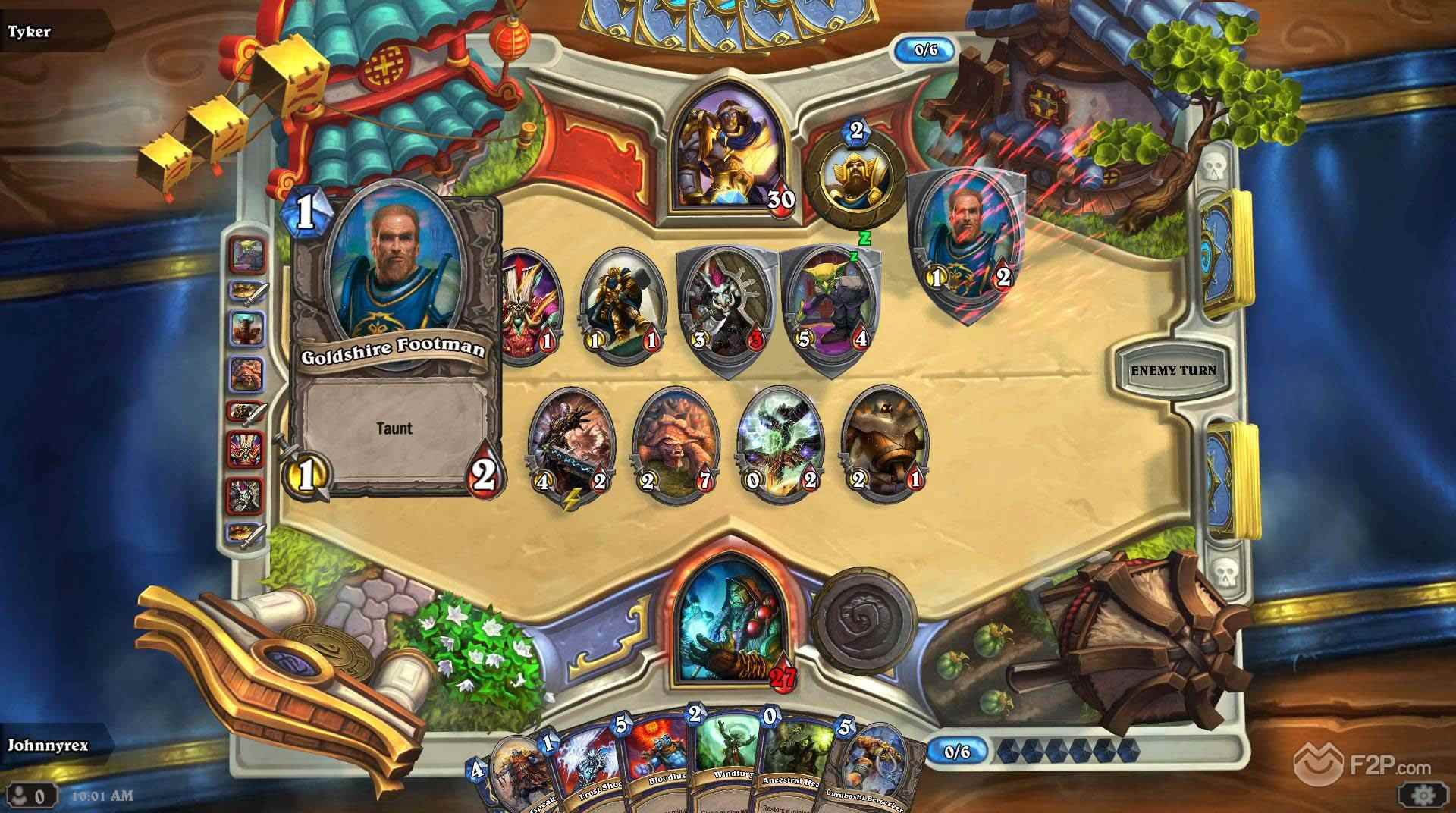A few years ago, Blizzard Entertainment tried their hands a trading card game version of World of Warcraft. I was into it, for a while, as were quite a few other fans. It coupled the familiar themes and powers of the MMO with excellent art and an interesting mechanic for getting cards into play that sought to reduce some of the problems inherent with a TCG’s necessary randomization. While I no longer play it, it seems to still be going, if the shelves at Target are to be believed. And now, Blizzard seems to be working on bringing that sort of turn-based strategic and collectible experience to their PC fanbase with Hearthstone: Heroes of Warcraft, currently in closed beta.

The game behaves like most TCGs: you acquire a starter set of cards, assemble a deck, and do battle with other players. Every turn within a game session, you receive a mana crystal with which to cast spells or summon minions from your hand, ensuring you never get shorted on the resources necessary to play. The goal is to reduce your enemy’s hero to 0 health while keeping yours alive. There’s a hero for each of the nine basic character classes in World of Warcraft, from ancient legends like Malfurion and Gul’dan to relative newcomers like Valeera and Anduin. Each hero has some class-specific cards, and a general pool from which they can gather other minions. The game is certainly not rocking the boat when it comes to traditional aspects of TCGs, and as with most things, the devil is in the details.
There’s an astounding amount of detail in Hearthstone‘s art and sound design. The play areas themselves are interactive, every minion has a unique voice, opponents slam into one another with resounding cracks to the cheers of the onlooking crowd – it all leads to a greater sense of immersion. The minions’ abilities are varied quite nicely, opening up multiple avenues and playstyles as they are added to decks. Each hero has a power to which they always have access, meaning that a player is only rarely entirely out of options. There are two play modes: regular or Constructed, in which players assemble their decks from their personal collections before doing battle, and The Arena, where a brand new deck is constructed from a pool of random cards and runs are more limited. Both modes offer up rewards, as do Quests which are distributed once a day, most commonly in the form of gold which can be used to enter The Arena or buy ‘Expert’ packs of cards. And if you don’t need some of the cards you get, you can ‘Disenchant’ some, breaking them down into Dust which is then used to assemble different cards, from Common cards all the way up to Legendaries.
As much as I like Hearthstone, I recognize it has some flaws. There’s very little to do on an opponent’s turn. There are ‘secrets’ which are cards that activate on certain triggers from an opponent, but only a few classes have them and they’re not that difficult to deal with. A couple classes feel a little unbalanced (looking at you, Priests) and it can be difficult to assemble an effective ‘theme’ deck. There are some glitches here and there, but the game is still in beta and that’s par for the course. Finally, the game can be a bit stingy with its in-game currency and rewards, and while the nature of its systems keep it from being a ‘pay-to-win’ style game outwardly, I feel like higher quest rewards or more Dust from the Arena would be better incentives to keep playing.
That said, Hearthstone is a rock-solid implementation of a good premise for an extension of one of Blizzard’s longest-running franchises. I am enjoying the beta, and continue to sneak matches in around writing sessions and bouts with longer games like Skyrim and World of Warcraft. It scratches the Magic: the Gathering itch quite well and, flawed as it is in places, I’m curious and eager to see how it behaves in its final form.





